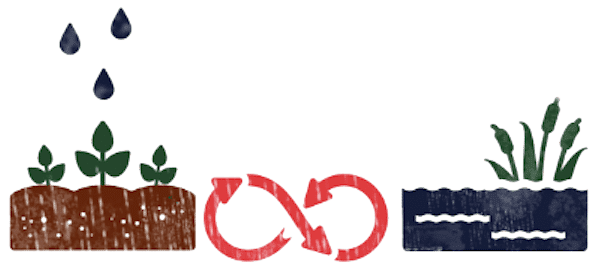Sustainability
Sustainable farming practices are the key to keeping Smith’s Farm’s delicious and nutritious vegetables on your plates for years to come. Smith’s Farm has had 6 generations to perfect the art of sustainability and utilize this knowledge at the core of our farming practices. Learn more about our sustainable farming practices!
Crop Rotation
Rotating a crop every few years keeps the soil balanced and the cropping system sustainable. A healthy rotation is also a natural way to reduce fertilizer cost and control diseases in the soil that would be detrimental to crop quality.
We rotate our Broccoli crop once every 3 to 5 years with potatoes and other rotation crops. Broccoli is an important crop in the rotation as a natural fumigant that kills off many soil-borne diseases.
Cover Crops
A cover crop is a secondary crop that’s planted in a field either between the rows of a primary crop or during the off-season. Once planted, it will protect the soil from erosion and from being exposed for much of the winter. It’s also a great way to further diversify organic activity in the soil.
We have hand selected a variety of cover crops that are well-suited for our cropping system. One of the staples to our rotation is Winter Rye. Winter Rye can be planted right after the broccoli and cauliflower is harvested. Winter Rye establishes in late summer through early fall therefore protecting the ground over winter months.
Conservation Practices
We know the health and sustainability of our land drives the quality of our produce and ensures that our customers get the best. To do this, we use science-based, data-driven conservation practices that maintain the quality and longevity of our land. These practices include:

MAINTAINING WATERWAYS AND DITCHES
When it rains, loose soil is washed away – yes, everyone knows that. What you probably haven’t thought about is what that does to land and the soil. Smith’s Farm has remained pristine because we are proactive in maintaining what’s taken so long to create. We have sediment ponds that catch the runoff, treat the soil, and then every year, we use our equipment to bring that treated soil back into the fields where it belongs.

NUTRIENT AND SEDIMENT CONTROL SYSTEMS
The sediment ponds mentioned above are very important to organically maintaining the land. We had the NRCS (Natural Resources Conservation Service) help us with the design and planted cattails and thick grasses leading up to the ponds. These treat water and soil runoff with additional nutrients before they hit the ponds.

ESTABLISHED BUFFER ZONES TO LAKES AND STREAMS
Phosphorus isn’t readily available to plants, so we sometimes need to add some. But while it’s great for the crop, if too much phosphorus gets into water, it causes algae. To make sure that this doesn’t happen, we have buffer zones surrounding our sediment ponds to keep everything in its rightful place.


